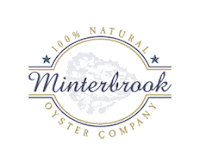Today, I am going to share with you a recipe that I have adapted from the Tartine cookbook (Prueitt/Robertson). It is very straightforward, and because of the minimal ingredient list, it's very important to use the absolute best of everything.
A couple of notes before we start; first, it's very important to have everything ready to go and to have read the instructions completely before beginning, because once the sugar reaches the proper temperature, there is no time to mess around. In proper kitchens, this is called "mise en place," or everything in place. Secondly, many books recommend keeping a bowl of ice water next to the stove in case you burn yourself with the hot caramel. I have a better suggestion: just don't burn yourself. Sugar is much, much hotter than you expect it to be, and sugar burns are usually worse than you'd expect them to be. Please be careful.
Chocolate Pecan Toffee
yield: about 1.5#
2 cups pecan pieces, toasted lightly
(325 F until they smell roasty and delicious)
(325 F until they smell roasty and delicious)
1.75 cups sugar
3 T water
4 oz unsalted butter
1 t. dark molasses
1/4 t. sea or kosher salt (a pinch more if you like it salty)
1 t. vanilla extract
1/4 t. baking soda
5 oz bittersweet chocolate, in chips or well chopped
~~~
Line a baking sheet with oiled parchment or a nonstick pan liner.
Spread half of the nuts over the pan.
In a heavy medium saucepan, combine the sugar, water, molasses, butter, and salt.

Bring to a boil over medium heat. Stirring frequently, cook until the mixture reaches 295F, which will take about 5-7 minutes.
Immediately remove from the heat, and carefully stir in the baking soda and vanilla. The mixture will foam up and could very easily overflow the pot if you chose one that's too small. The moisture in the vanilla will cause this minor eruption. Make sure that the soda/vanilla are thoroughly dispersed, and pour over the nuts on the pan. Use a lightly oiled spatula to spread the toffee if needed.
Let the toffee rest for about five minutes, and sprinkle the chocolate evenly over the still warm surface.
Allow the chocolate to warm through, then smooth out with an offset spatula.
Sprinkle the rest of the nuts over the chocolate, pat gently to set them, and then let the toffee rest at room temperature until it's firm and the chocolate is set.
Break into shards, and store in a sealed container, in a cool/dry place, for up to several weeks.
















































